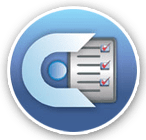Reading an OMR sheet involves using a scanner or a dedicated OMR reader device to capture the marks made on the sheet and interpret them as data.
Here's a general process for reading an OMR sheet:
1. Prepare the OMR sheet: Design the OMR sheet with clearly defined areas for marking responses. Make sure the bubbles or checkboxes are properly aligned and labeled for each question or option.
2. Scan the OMR sheet: Use a scanner or an OMR reader device to scan the OMR sheet. The scanner captures an image of the sheet, including the marked bubbles.
3. Image processing: Perform image processing techniques to enhance the scanned image quality, such as adjusting brightness, and contrast, and removing noise.
4. Locate and extract the bubbles: Analyze the scanned image to identify the positions of the marked bubbles. This process usually involves locating specific regions of interest and segmenting individual bubbles.
5. Binary image conversion: Convert the grayscale or color image into a binary image, where marked bubbles appear as black pixels and the rest as white pixels. This step simplifies the subsequent processing.
6. Bubble recognition: Apply techniques like thresholding, contour detection, or connected component analysis to identify and recognize the marked bubbles.
7. Data extraction: Interpret the recognized marks as data. Each marked bubble corresponds to a specific response or option. Extract the coordinates or positions of the marked bubbles to determine the selected answers.
8. Data validation: Validate the extracted data to ensure accuracy. Check for any ambiguities or errors in marking, missing responses, or inconsistencies.
9. Data analysis: Process and analyze the extracted data as per your requirements. This may involve aggregating responses, generating reports, or performing statistical analysis.
It's worth noting that the specific techniques and software used for OMR reading can vary depending on the system or software you're using. Dedicated OMR software often provides built-in tools and algorithms to automate the process, making it more efficient and accurate.







